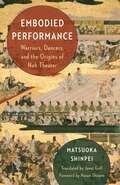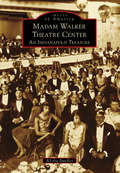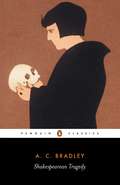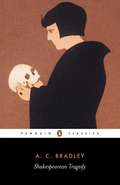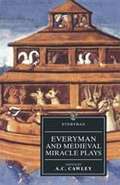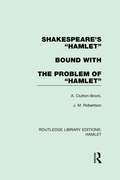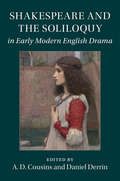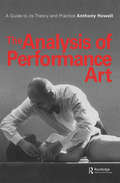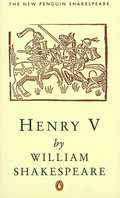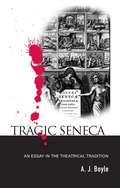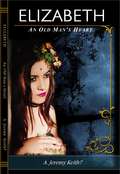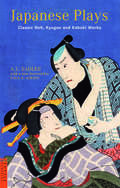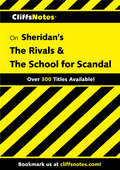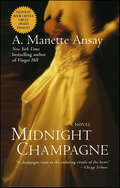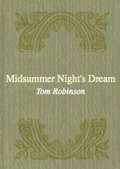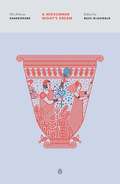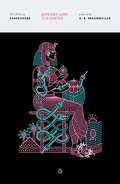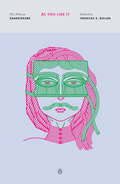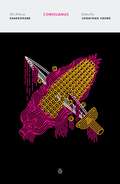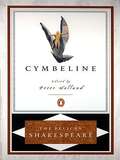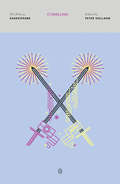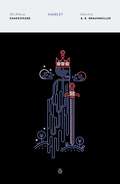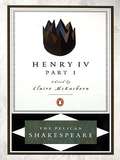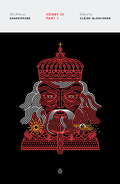- Table View
- List View
Embodied Performance: Warriors, Dancers, and the Origins of Noh Theater
by 1 Shinpei MatsuokaIn this groundbreaking book, Matsuoka Shinpei—a leading scholar of noh theater—provides a detailed account of the birth of one of Japan’s most celebrated art forms. Although noh has often been associated with the elite, Embodied Performance explores its links to a wider popular culture, revealing a rich and colorful public space where courtiers and commoners mingled.Matsuoka traces noh’s connections to popular and religious dances, linked verse, and chigo (beautiful temple boy) culture, emphasizing performance and the body. He describes the world of noh playwright Zeami as well as his views on dramaturgy and performance—and argues that Zeami was once a chigo. Matsuoka shows how religious rituals and cultural forms like ecstatic dance prayer and plays about demons in hell attracted people on the margins. Such activities, Matsuoka contends, drew on the tension between wild acrobatic movement and corporeal restraint, influencing the development of noh as well as the art of flower arranging and the tea ceremony. Janet Goff’s translation makes available in English a classic work of Japanese scholarship that will be invaluable to those interested in medieval Japanese culture, noh, and theatrical practice.
Madame Walker Theatre Center: An Indianapolis Treasure (Images of America)
by A'Lelia BundlesAs they watched construction of the block-long flatiron building brick by brick throughout 1927, African American residents of Indianapolis could scarcely contain their pride. This new headquarters of the Madam C.J. Walker Manufacturing Company, with its terra-cotta trimmed facade, was to be more than corporate offices and a factory for what then was one of America's most successful black businesses. In fact, it was designed as "a city within a city," with an African Art Deco theater, ballroom, restaurant, drugstore, beauty salon, beauty school, and medical offices. Generations of African American families met for Sunday dinner at the Coffee Pot, enjoyed first-run movies and live performances in the Walker Theatre, and hosted dances in the Casino. Today, this National Historic Landmark is an arts center anchoring the Indiana Avenue Cultural District.
Shakespearean Tragedy: Lectures On Hamlet Othello King Lear Macbeth
by John Bayley A. BradleyA.C. Bradley put Shakespeare on the map for generations of readers and students for whom the plays might not otherwise have become "real" at all' writes John Bayley in his foreword to this edition of Shakespearean Tragedy: Lectures on Hamlet, Othello, King Lear and Macbeth.Approaching the tragedies as drama, wondering about their characters as he might have wondered about people in novels or in life, Bradley is one of the most liberating in the line of distinguished Shakespeare critics. His acute yet undogmatic and almost conversational critical method has—despite fluctuations in fashion—remained enduringly popular and influential. For, as John Bayley observes, these lectures give us a true and exhilarating sense of 'the tragedies joining up with life, with all our lives; leading us into a perspective of possibilities that stretch forward and back in time, and in our total awareness of things.
Shakespearean Tragedy
by John Bayley A. C. BradleyBradley put Shakespeare on the map for generations of readers and students for whom the plays might not otherwise have become "real" at all' writes John Bayley in his foreword to this edition of Shakespearean Tragedy: Lectures on Hamlet, Othello, King Lear and Macbeth. <P><P> Approaching the tragedies as drama, wondering about their characters as he might have wondered about people in novels or in life, Bradley is one of the most liberating in the line of distinguished Shakespeare critics. His acute yet undogmatic and almost conversational critical method hasâe"despite fluctuations in fashionâe"remained enduringly popular and influential. For, as John Bayley observes, these lectures give us a true and exhilarating sense of 'the tragedies joining up with life, with all our lives; leading us into a perspective of possibilities that stretch forward and back in time, and in our total awareness of things.
Everyman and Medieval Miracle Plays
by A. C. CawleyThis volume contains the moral play Everyman and a representative collection of medieval biblical pageants. The pageants have been chosen for their intrinsic merit and because together they give a fair idea of the range and content of an English Corpus Christi cycle. They are taken from the cycles of York, Chester, Wakefield, Coventry, and 'N. town', with the addition of an excerpt from the Cornish plays (Appendix I). Most of the original words of the plays are preserved, but for the convenience of the general reader many archaic forms and spellings are modernized or normalized both within the line and in rhyme. Occasionally, however, an archaic form is kept for the sake of the rhyme, and a gloss added if necessary. Original stage directions are given and those in Latin are translated; they are distinguished from editorial directions, which are bracketed. Difficult words and short phrases are glossed in the margin, while longer word-groups needing explanation are paraphrased in footnotes.
Shakespeare's Hamlet bound with The Problem of Hamlet (Routledge Library Editions: Hamlet)
by A. Clutton-Brock J. M. RobertsonThis volume combines two classic works on Hamlet, first published in 1919 and 1922. The first book's original description says that it contains a theory which attempts to explain an everlasting problem - it insists that Hamlet is neither a failure not an accident, but a very great work of art. In a final chapter, the play is examined as an aesthetic document. It is a profoundly interesting and not unprovocative work. The second book reviews and attempts to resolve the most interesting debate of any Shakespeare play and presents proper method for investigating the genesis of the plays in this way.
Shakespeare and the Soliloquy in Early Modern English Drama
by A. D. Cousins Daniel DerrinEncompassing nearly a century of drama, this is the first book to provide students and scholars with a truly comprehensive guide to the early modern soliloquy. Considering the antecedents of the form in Roman, late fifteenth and mid-sixteenth century drama, it analyses its diversity, its theatrical functions and its socio-political significances. Containing detailed case-studies of the plays of Marlowe, Shakespeare, Jonson, Ford, Middleton and Davenant, this collection will equip students in their own close-readings of texts, providing them with an indepth knowledge of the verbal and dramaturgical aspects of the form. Informed by rich theatrical and historical understanding, the essays reveal the larger connections between Shakespeare's use of the soliloquy and its deployment by his fellow dramatists.
The Works of John Dryden: De Arte Graphica and Shorter Works, Volume XX
by John Dryden A. E. Wallace MaurerPresents six pieces written during Dryden's final decade. Two are translations, three introduce translations made by others, and the sixth introduces an original work by one of Dryden's friends.
The Analysis of Performance Art: A Guide to its Theory and Practice
by Anthony Howell A. HowellThis finely illustrated book offers a simple yet comprehensive 'grammar' of a new discipline. Performance Art first became popular in the fifties when artists began creating 'happenings'. Since then the artist as a performer has challenged many of the accepted rules of the theatre and radically altered our notion of what constitutes visual art. This is the first publication to outline the essential characteristics of the field and to put forward a method for teaching the subject as a discipline distinct from dance, drama, painting or sculpture.Taking the theory of primary and secondary colours as his model, Anthony Howell posits three primaries of action and shows how these may be mixed to obtain a secondary range of actions. Based on a taught course, the system is designed for practical use in the studio and is also entertaining to explore. Examples are cited from leading performance groups and practitioners such as Bobbie Baker, Orlan, Stelarc, Annie Sprinkle, Robert Wilson, Goat Island, and Station House Opera. This volume, however, is not just an illustrated grammar of action - it also shows how the syntax of that grammar has psychoanalytic repercussions. This enables the performer to relate the system to lived experience, ensuring a realisation that meaning is being dealt with through these actions and that the stystem set forth is more than a dry structuring of the characteristics of movement.Freud's notion of 'transference' and Lacan's understanding of 'repetition' are compared to a performer's usage of the same terms. Thus the book provides a psychoanalytic critique of performance at the same time as it outlines an efficient method for creating live work on both fine art and theatre courses.
Henry V
by William Shakespeare A. HumphreysShakespeare's immutable history of Henry's victory over the French at Agincourt and the subsequent peace between the two nations is also a study of war and kingship. From a wild youth, Henry comes to embody all of the kingly virtues: courage, justice, integrity and honour. Ironically these qualities are brought to the fore by the realities of war. Written at the end of the life of Elizabeth I, Henry V told the British people that with strong leadership, they had little to fear at a time of uncertainty.
Tragic Seneca: An Essay in the Theatrical Tradition
by A. J. BoyleTragic Seneca undertakes a radical re-evaluation of Seneca's plays, their relationship to Roman imperial culture and their instrumental role in the evolution of the European theatrical tradition.Following an introduction on the history of the Roman theatre, the book provides a dramatic and cultural critique of the whole of Seneca's corpus, analysing the declamatory form of the plays, their rhetoric, interiority, stagecraft and spectacle, dramatic, ideological and moral structure and their overt theatricality. Each of Seneca's plays is examined in detail, locating the force of Senecan drama not only in the moral complexity of the texts and their representations of power, violence, history, suffering and the self, but the semiotic interplay of text, tradition and culture.The later chapters focus on Seneca's influence on Italian, English and French drama of the Renaissance. A.J. Boyle argues that tragedians such as Cinthio, Kyd, Marlowe, Shakespeare, Webster, Corneille, and Racine owe a debt to Seneca that goes beyond allusion, dramatic form and the treatment of tyranny and revenge to the development of the tragic sensibility and the metatheatrical mind.Tragic Seneca attempts to restore Seneca to a central position in the European literary tradition. It will provide readers and directors of Seneca's plays with the essential critical guide to their intellectual, cultural and dramatic complexity.
Elizabeth: An Old Man's Heart
by A. Jeremy KeithElizabeth: An Old Man’s Heart is a novel of intrigue and romance. It’s the type of novel that we can identify with. It transcends the story told by an old man to a detective, in which he says goodbye to adolescence, and of course, to the myth that symbolized the love he found in his youth. It was a time when reason became a puppet of destiny, induced by emotion. The story revolves around Richard Keith, Elizabeth, and Alejandra. Richard, the main character in this story, falls in love with Elizabeth, whose beauty leaves him speechless and turns his heart into a runaway locomotive. Because that’s what happens when we fall in love: we feel like our world turns topsy-turvy. Elizabeth is the pinnacle of beauty for Richard Keith. He started to love her as a boy and always noticed her during recess. One day he gathered up his courage and wrote his first letter to her. Elizabeth, innocent in her thoughts, didn’t know what love was and she tore up the letter. Even so, the brave boy insisted until the day when she didn’t tear his letters up. However, she never replied. One day, he grew tired and stopped sending them. After a year, Elizabeth started to miss the beautiful words that Richard Keith wrote to her. In junior high Elizabeth loved him, but he wasn’t as brave as he had been as a child, though his love hadn’t changed. His self-esteem had taken a severe blow when he lost strength in his legs and started walking with a pronounced limp. Find out what happens between Richard Keith and Elizabeth, and what role Alejandra plays in their lives. What will happen when he wants to fix the past? Who will die, and who will live to tell about it? Poetic thoughts aren’t born with us, they’re provoked by destiny, which at the same time plays with our minds. The game of love is a passion that drives us crazy and hypnotizes the soul. Destiny seeks its own muse to go crazy and grow old with, but at the same time, it gives us the opportunity to know and ex
Japanese Plays
by A. L. Sadler Paul S. AtkinsNothing reflects the beauty of life as much as Japanese theater. It is here that reality is held suspended and emptiness can fill the mind through words, music, dance, and mysticism. A.L. Sadler translates the mysteries of Noh, Kyogen, and Kabuki in his groundbreaking book, Japanese Plays. A seminal classic, it provides a cross section of Japanese theater that gives the reader a sampler of its beauty and power.
CliffsNotes on Sheridan's The Rivals & The School for Scandal
by A. M. FiskinThis CliffsNotes guide includes everything you’ve come to expect from the trusted experts at CliffsNotes, including analysis of the most widely read literary works.
Midnight Champagne: A Novel
by A. Manette AnsayApril Liesgang and Caleb Shannon have known each other for just three short months, so their Valentine's Day wedding at a chapel near the shores of Lake Michigan has both families in an uproar. As the festivities unfold (and the cash bar opens), everyone has an opinion and a lively prediction about April and Caleb's union, each the reflection of a different marital experience.Meanwhile, at the nearby Hideaway Lodge, a domestic quarrel ends in tragedy. As April and Caleb's life together begins, death parts another man and woman in angry violence—and as the two stories gradually intersect, their juxtaposition explores the tangled roots of vulnerability and desire.By the time the last polka has been danced and the bouquet tossed, Midnight Champagne has cast an extraordinary spell. From the novel's opening epigraph from Chekhov—"If you fear loneliness, then marriage is not for you"—to its final moments in the honeymoon suite, A. Manette Ansay weaves tenderness and fury, passion and wonder into a startling tapestry of love in all its paradox and power.
A Midsummer Night's Dream
by William Shakespeare Russ Mcdonald Stephen Orgel A. R. Braunmuller"I feel that I have spent half my career with one or another Pelican Shakespeare in my back pocket. Convenience, however, is the least important aspect of the new Pelican Shakespeare series. Here is an elegant and clear text for either the study or the rehearsal room, notes where you need them and the distinguished scholarship of the general editors, Stephen Orgel and A. R. Braunmuller who understand that these are plays for performance as well as great texts for contemplation." (Patrick Stewart) The distinguished Pelican Shakespeare series, which has sold more than four million copies, is now completely revised and repackaged. Each volume features: * Authoritative, reliable texts * High quality introductions and notes * New, more readable trade trim size * An essay on the theatrical world of Shakespeare and essays on Shakespeare's life and the selection of texts
A Midsummer Night's Dream
by William Shakespeare Russ Mcdonald Stephen Orgel A. R. BraunmullerThe acclaimed Pelican Shakespeare series, now in a dazzling new series design The legendary Pelican Shakespeare series features authoritative and meticulously researched texts paired with scholarship by renowned Shakespeareans. Each book includes an essay on the theatrical world of Shakespeare's time, an introduction to the individual play, and a detailed note on the text used. Updated by general editors Stephen Orgel and A. R. Braunmuller, these easy-to-read editions incorporate over thirty years of Shakespeare scholarship undertaken since the original series, edited by Alfred Harbage, appeared between 1956 and 1967. With stunning new covers, definitive texts, and illuminating essays, the Pelican Shakespeare will remain a valued resource for students, teachers, and theater professionals for many years to come. This edition of A Midsummer Night's Dream is edited with an introduction by Russ McDonald.For more than seventy years, Penguin has been the leading publisher of classic literature in the English-speaking world. With more than 1,700 titles, Penguin Classics represents a global bookshelf of the best works throughout history and across genres and disciplines. Readers trust the series to provide authoritative texts enhanced by introductions and notes by distinguished scholars and contemporary authors, as well as up-to-date translations by award-winning translators.From the Trade Paperback edition.
Antony and Cleopatra
by William Shakespeare Stephen Orgel A. R. BraunmullerThe acclaimed Pelican Shakespeare series edited by A. R. Braunmuller and Stephen Orgel The legendary Pelican Shakespeare series features authoritative and meticulously researched texts paired with scholarship by renowned Shakespeareans. Each book includes an essay on the theatrical world of Shakespeare’s time, an introduction to the individual play, and a detailed note on the text used. Updated by general editors Stephen Orgel and A. R. Braunmuller, these easy-to-read editions incorporate over thirty years of Shakespeare scholarship undertaken since the original series, edited by Alfred Harbage, appeared between 1956 and 1967. With definitive texts and illuminating essays, the Pelican Shakespeare will remain a valued resource for students, teachers, and theater professionals for many years to come. For more than seventy years, Penguin has been the leading publisher of classic literature in the English-speaking world. With more than 1,700 titles, Penguin Classics represents a global bookshelf of the best works throughout history and across genres and disciplines. Readers trust the series to provide authoritative texts enhanced by introductions and notes by distinguished scholars and contemporary authors, as well as up-to-date translations by award-winning translators.
As You Like It
by William Shakespeare Stephen Orgel A. R. Braunmuller Frances E. DolanThe acclaimed Pelican Shakespeare series edited by A. R. Braunmuller and Stephen Orgel The legendary Pelican Shakespeare series features authoritative and meticulously researched texts paired with scholarship by renowned Shakespeareans. Each book includes an essay on the theatrical world of Shakespeare’s time, an introduction to the individual play, and a detailed note on the text used. Updated by general editors Stephen Orgel and A. R. Braunmuller, these easy-to-read editions incorporate over thirty years of Shakespeare scholarship undertaken since the original series, edited by Alfred Harbage, appeared between 1956 and 1967. With definitive texts and illuminating essays, the Pelican Shakespeare will remain a valued resource for students, teachers, and theater professionals for many years to come. For more than seventy years, Penguin has been the leading publisher of classic literature in the English-speaking world. With more than 1,700 titles, Penguin Classics represents a global bookshelf of the best works throughout history and across genres and disciplines. Readers trust the series to provide authoritative texts enhanced by introductions and notes by distinguished scholars and contemporary authors, as well as up-to-date translations by award-winning translators. From the Trade Paperback edition.
Coriolanus (The Pelican Shakespeare)
by William Shakespeare Stephen Orgel A. R. Braunmuller Jonathan CreweThe acclaimed Pelican Shakespeare series edited by A. R. Braunmuller and Stephen Orgel The legendary Pelican Shakespeare series features authoritative and meticulously researched texts paired with scholarship by renowned Shakespeareans. Each book includes an essay on the theatrical world of Shakespeare’s time, an introduction to the individual play, and a detailed note on the text used. Updated by general editors Stephen Orgel and A. R. Braunmuller, these easy-to-read editions incorporate over thirty years of Shakespeare scholarship undertaken since the original series, edited by Alfred Harbage, appeared between 1956 and 1967. With definitive texts and illuminating essays, the Pelican Shakespeare will remain a valued resource for students, teachers, and theater professionals for many years to come. For more than seventy years, Penguin has been the leading publisher of classic literature in the English-speaking world. With more than 1,800 titles, Penguin Classics represents a global bookshelf of the best works throughout history and across genres and disciplines. Readers trust the series to provide authoritative texts enhanced by introductions and notes by distinguished scholars and contemporary authors, as well as up-to-date translations by award-winning translators.
Cymbeline
by William Shakespeare Stephen Orgel Peter Holland A. R. Braunmuller"I feel that I have spent half my career with one or another Pelican Shakespeare in my back pocket. Convenience, however, is the least important aspect of the new Pelican Shakespeare series. Here is an elegant and clear text for either the study or the rehearsal room, notes where you need them and the distinguished scholarship of the general editors, Stephen Orgel and A. R. Braunmuller who understand that these are plays for performance as well as great texts for contemplation." (Patrick Stewart) The distinguished Pelican Shakespeare series, which has sold more than four million copies, is now completely revised and repackaged. Each volume features: * Authoritative, reliable texts * High quality introductions and notes * New, more readable trade trim size * An essay on the theatrical world of Shakespeare and essays on Shakespeare's life and the selection of texts
Cymbeline: Aus: [dramatische Werke] [shakspeare's Dramatische Werke], [bd. 32] (The Pelican Shakespeare)
by William Shakespeare Stephen Orgel Peter Holland A. R. Braunmuller"I feel that I have spent half my career with one or another Pelican Shakespeare in my back pocket. Convenience, however, is the least important aspect of the new Pelican Shakespeare series. Here is an elegant and clear text for either the study or the rehearsal room, notes where you need them and the distinguished scholarship of the general editors, Stephen Orgel and A. R. Braunmuller who understand that these are plays for performance as well as great texts for contemplation." (Patrick Stewart)The distinguished Pelican Shakespeare series, which has sold more than four million copies, is now completely revised and repackaged.Each volume features:* Authoritative, reliable texts* High quality introductions and notes* New, more readable trade trim size* An essay on the theatrical world of Shakespeare and essays on Shakespeare's life and the selection of texts
Hamlet
by William Shakespeare Stephen Orgel A. R. BraunmullerThe acclaimed Pelican Shakespeare series, now in a dazzling new series design in time for the 400th anniversary of the Bard's death The legendary Pelican Shakespeare series features authoritative and meticulously researched texts paired with scholarship by renowned Shakespeareans. Each book includes an essay on the theatrical world of Shakespeare's time, an introduction to the individual play, and a detailed note on the text used. Updated by general editors Stephen Orgel and A. R. Braunmuller, these easy-to-read editions incorporate over thirty years of Shakespeare scholarship undertaken since the original series, edited by Alfred Harbage, appeared between 1956 and 1967. With stunning new covers, definitive texts, and illuminating essays, the Pelican Shakespeare will remain a valued resource for students, teachers, and theater professionals for many years to come. This edition of Hamlet is edited with an introduction by series editor A. R. Braunmuller.For more than seventy years, Penguin has been the leading publisher of classic literature in the English-speaking world. With more than 1,700 titles, Penguin Classics represents a global bookshelf of the best works throughout history and across genres and disciplines. Readers trust the series to provide authoritative texts enhanced by introductions and notes by distinguished scholars and contemporary authors, as well as up-to-date translations by award-winning translators.From the Trade Paperback edition.
Henry IV, Part 1
by William Shakespeare Stephen Orgel A. R. Braunmuller Claire Mceachern"I feel that I have spent half my career with one or another Pelican Shakespeare in my back pocket. Convenience, however, is the least important aspect of the new Pelican Shakespeare series. Here is an elegant and clear text for either the study or the rehearsal room, notes where you need them and the distinguished scholarship of the general editors, Stephen Orgel and A. R. Braunmuller who understand that these are plays for performance as well as great texts for contemplation." (Patrick Stewart) The distinguished Pelican Shakespeare series, which has sold more than four million copies, is now completely revised and repackaged. Each volume features: * Authoritative, reliable texts * High quality introductions and notes * New, more readable trade trim size * An essay on the theatrical world of Shakespeare and essays on Shakespeare's life and the selection of texts
Henry IV, Part 1
by William Shakespeare Stephen Orgel A. R. Braunmuller Claire MceachernThe acclaimed Pelican Shakespeare series edited by A. R. Braunmuller and Stephen Orgel The legendary Pelican Shakespeare series features authoritative and meticulously researched texts paired with scholarship by renowned Shakespeareans. Each book includes an essay on the theatrical world of Shakespeare’s time, an introduction to the individual play, and a detailed note on the text used. Updated by general editors Stephen Orgel and A. R. Braunmuller, these easy-to-read editions incorporate over thirty years of Shakespeare scholarship undertaken since the original series, edited by Alfred Harbage, appeared between 1956 and 1967. With definitive texts and illuminating essays, the Pelican Shakespeare will remain a valued resource for students, teachers, and theater professionals for many years to come.This edition of Henry IV, Part 1 is edited with an introduction by Claire McEachern. For more than seventy years, Penguin has been the leading publisher of classic literature in the English-speaking world. With more than 1,700 titles, Penguin Classics represents a global bookshelf of the best works throughout history and across genres and disciplines. Readers trust the series to provide authoritative texts enhanced by introductions and notes by distinguished scholars and contemporary authors, as well as up-to-date translations by award-winning translators.From the Trade Paperback edition.
